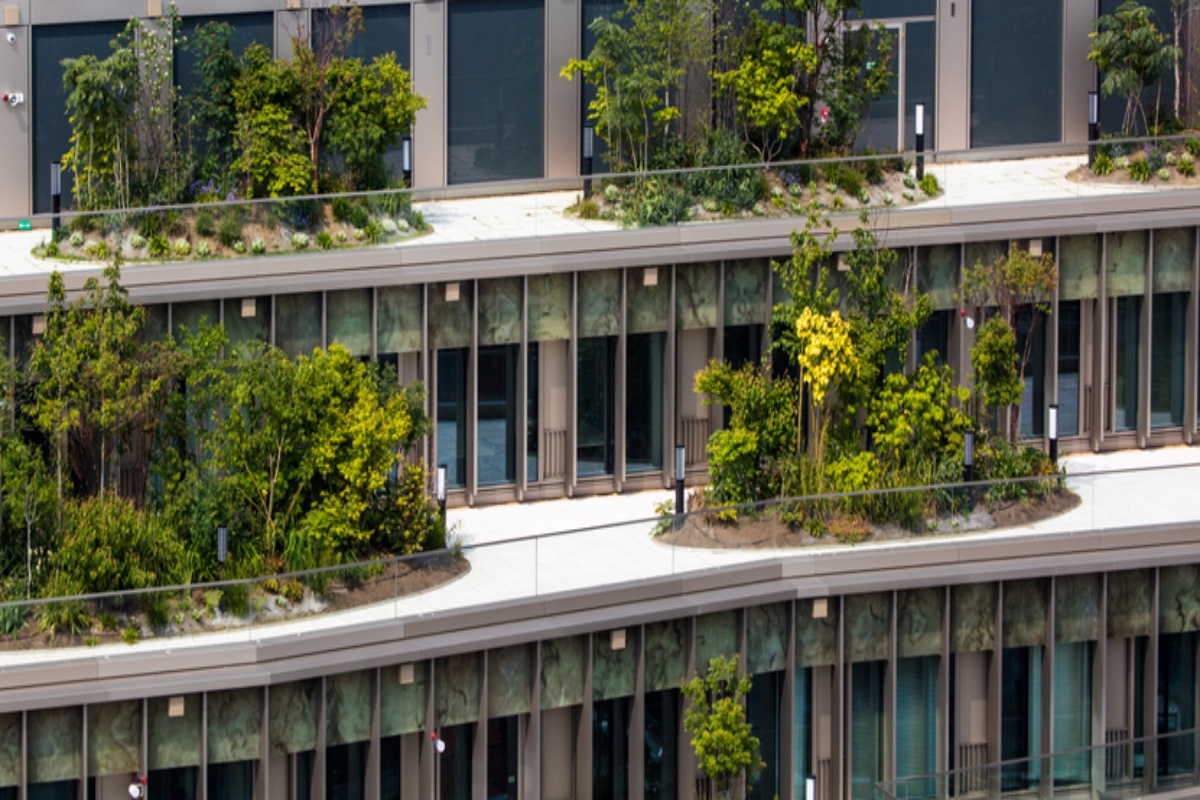Sustainability is not an added construct; it is a way of living. When it comes to enabling sustainability through architecture, the role of design which prioritizes energy-efficiency assumes immense significance, say Indian architects.
According to Sachin Rastogi, Founding Partner and Principal, Zero Energy Design Lab, “A ‘net-zero energy’ building is one where the total amount of energy used by the building on an annual basis is roughly equal to the amount of renewable energy created on the site, or nearby. Contrary to common assumptions, a ‘near net-zero building’ (built to minimise net energy; one that strives to be net-zero) does not need to be expensive to construct and run; such a building is designed to work with its climate and context. In addition to the significant role of natural lighting and ventilation, a building such as this relies on the use of passive design strategies which can for instance cut down solar heat gain by almost as much as 60-70 per cent.”
Advertisement
He adds, “Moreover, the building’s heat loads can be significantly lowered by integrating heat sinks such as water bodies and incorporating native vegetation; and the forms and sizes of fenestrations can be designed to maximize daylighting within the interior spaces to as much as 100 per cent, bringing down the home’s electricity loads. Through such techniques, both the building’s construction and operational costs can be significantly reduced.”
Naveen Thomas, Vertical Head of Corporate Architecture at Edifice Consultants, says that the design of Atal Akshay Urja Bhawan, their upcoming project in New Delhi, emerges as an exemplary precedent by creating a landmark that embodies energy consciousness in the city’s urban fabric.
“As the government actively endorses energy efficiency in the country, public buildings are expected to lead the way in minimizing their environmental footprints. Serving as the headquarters of the Ministry of New and Renewable Energy, the design demonstrates a new model of civic development that blends iconicity with an interactive public interface. Atal Akshay Urja Bhawan is slated to achieve net-positive energy status as a result of the power generated from solar panels and the use of energy-efficient materials for floors and ceilings, cavity walls to reduce HVAC loads and dedicated power-saving electrical equipment.”
Akshat Bhatt, Principal Architect at Architecture Discipline, New Delh, recommends tenets to design buildings in a sustainable manner.
* Orienting the building to increase the ingress of daylight and fresh air, and designing it with enough thermal mass to regulate internal temperatures. This limits the need for artificial lighting and air conditioning and hence reduces the building’s energy consumption.
* Constructing it in a modular and flexible manner that adapts to future needs of its users. This reduces the need for costly modifications and eliminates the pollution occurring due to demolition or new construction.
* Making it self-sufficient in terms of power and portable water, through renewable energy sources and rainwater harvesting. Spaces for farming and growing food must also be incorporated in the form of kitchen gardens or grow rooms.
* Treating all dry and wet waste that is produced on the site so that no untreated waste is released. Using locally sourced materials can also reduce the building’s embodied energy and costs.
Repurposing existing buildings is also a sustainable and cost-effective alternative to building anew — adaptive reuse and conservation projects allow us to convert uninhabitable spaces into habitable ones and preserve built heritage.
While it is true that their initial costs may be high, eco-friendly homes are much cheaper to run in the long run and over the building’s entire life cycle since they significantly lower water requirements and energy consumption due to lighting and air conditioning. The maintenance cost of most green systems or fixtures is also low, allowing residents to recover initial costs in about 3-4 years.











